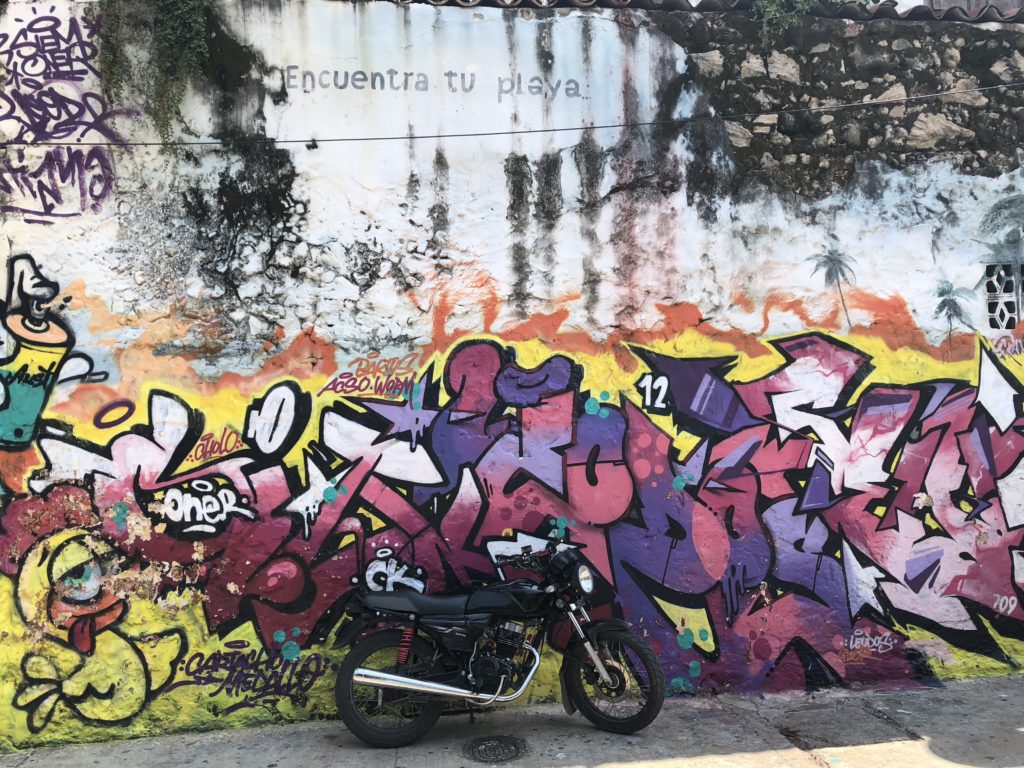First Week in Colombia

The first issue that comes to anyone’s mind when discussing travel to Colombia is safety. The November 2017 agreement between the Colombian government and the Federation of Armed Forces of Colombia (FARC) has drastically increased tourism for the country with 2018 tourism being at record levels. That is not to downplay the significant turmoil this country has experienced in years past, but with that being said, you must still be careful.
A few noteworthy tidbits from Colombia thus far:
- You can drink the water, at least in large cities – You will get different answers to this question depending on who you ask. The consensus is that in large cities it is safe but in smaller cities and towns, bottled water is recommended. We drank only bottled water in Cartagena water out of the tap in Bogota and have had no issues thus far (knock on wood).
- People take the time to help. Once we arrived to Bogota, we were attempting to decipher the city’s ridiculously complex bus system, which felt as if we were trying to read computer code. A young 20 something year old well dressed guy took notice and soon approached us asking, “¿Adonde van?” After subtly assessing our surroundings, we cautiously explained that we were heading near the university and gave him the street corners of where we were staying. He attempted to decode the bus map himself but could not help us so called his friend who attends the university nearby our AirBnB. After speaking with his friend, he pulled up the directions on a google maps equivalent and allowed us to take a screenshot. He then walked us to the appropriate platform to catch our train. We cross checked his recommendations on our downloaded Bogota google map, which checked out the best we could tell. We followed his exact directions and arrived safely to our place. I can not imagine someone in the U.S. taking the time or effort to ensure two out of place looking tourists with enormous packs get to their destination. What others say about the friendliness of Colombians seems to hold true thus far.
- Carreras vs Calles – Carreras run north to south and Calles called run east to west; very confusing!
- Collectivos vs Taxis – Colombians seem to use these terms interchangeably but what is the actual difference? Collectivos are individuals that use their personal taxi or bus to transport groups of individuals to a similar drop off point; think UberPool. They are generally cheaper than taxis and the preferred method of transportation by locals, so if time is not an issue, they are a great option. Taxis are what you think of typical taxis, owned by a company but are more expensive but get you from point A to point B faster.
- Sport. Soccer is the most popular sport in Colombia but you would never guess the second most popular…cycling! People cycle everywhere on streets where cars are often three cars wide on a two lane road. Drivers may honk at cyclists and swerve in front of them, as they do with other cars but as odd as it sounds, they seem to respect them.
Cartagena
Do:
Old City – wander through the plazas and historic streets full of balconies with draping, overgrown flowers hanging overhead, grab a beer at Donde Fidel in the main plaza at dusk and enjoy the dancing that will ensue shortly after.
Getsemani – get there early in the day to beat the heat to take endless amounts of photos of murals lining the neighborhood walls, grab a coffee at Cafe del Mural and sit amongst the murals, have dinner at Restaurante Coroncoro amongst the locals and order the sopa con pollo – best chicken and rice dish I have ever had!

Don’t Do:
Stay more than 2-3 days if visiting for vacation as this is all you need to get a legitimate feel for what Cartagena has to offer.
Tours of historic sites such as Castillo de San Felipe – hot, not very informative and expensive (~$17 USD/person) and the Museo Historico de Cartagena de Indias (~$7.50 USD/person) – small, hot, not notable.
Good to Know:
Although situated along Colombia’s northern Carribbean coast, with the exception of Boca Grande (which is dirty, touristy and not at all remarkable), beaches in Cartagena must be visited by boat. These tour boats transport you to the islands off the coast of Cartagena with the most common being Playa Blanca and the Rosario Islands, take 45 minutes-1.5 hours to arrive, include lunch and typically cost ~$50 USD. Although the beaches are pretty and the water a bit more transparent, given the cost, the bumpy ride and the oft accompanying sea sickness, the reviews are overwhelmingly negative.